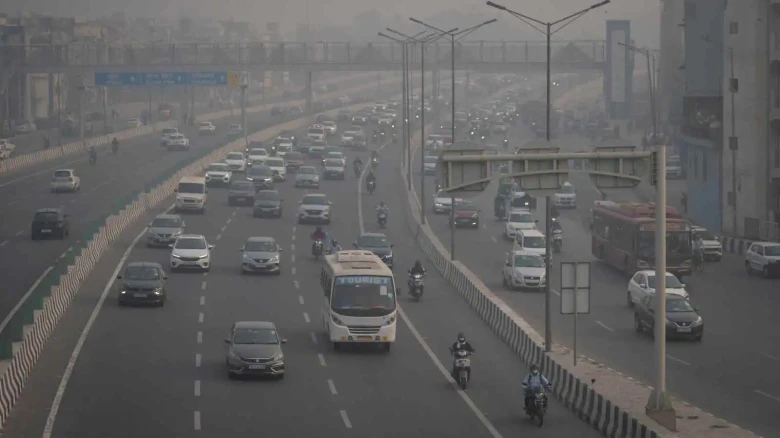Residents of Delhi woke up this morning to a dense layer of fog that made it harder to see and made breathing more difficult...
Digital Desk: Delhi gasped for air this morning as the Air Quality Index (AQI) re-entered the "severe" category in some parts, shortly after the bursting of firecrackers across the National Capital Region on Diwali wiped out the improvement in air quality due to a spell of rain.
Residents of Delhi woke up this morning to a dense layer of fog that made it harder to see and made breathing more difficult.
Data released by the Central Pollution Control Board (CPCB) revealed that the air quality index (AQI) in the nation's capital had declined even worse. It had already fallen to "very poor" yesterday as smoke from firecrackers combined with air pollution from stubble burning in north India.
According to CPCB data, the air quality index (AQI) in Jahangirpuri was recorded at 428 at 6 AM, while the AQI in ITO was reported at 430. In Punjabi Bagh, the AQI was 410, but in RK Puram, it was 417.
The classification of an AQI is as follows: 0–50 = "good", 51–100 = "satisfactory", 101–200 = "moderate", 201–300 = "poor", 301–400 = "very poor", and 401–500 = "severe".
An AQI level of 301–400 results in respiratory sickness after extended exposure, but an AQI level of 400–500 hurts healthy individuals and severely affects those who already have disorders.
Asthma, heart problems, and lung conditions may cause pain when the AQI level is between 150-200 and 201-300.
The CPCB said that earlier on Monday, Delhi's 24-hour average AQI was 358 (very poor).
This morning, the majority of real-time air monitoring platforms reported an air quality index (AQI) of 500 or above, with some locations recording as high as 900. At six in the morning, the AQI values at Jawaharlal Nehru Stadium were 910, Lajpat Nagar was 959, and Karol Bagh was 779.
According to CPCB data, the capital city experienced an AQI of 312 on Diwali last year, 382 in 2021, 414 in 2020, 337 in 2019, 281 in 2018, 319 in 2017, and 431 in 2016.
Every year, before winter arrives, the quality of the air in Delhi and other northern Indian cities deteriorates due to the accumulation of pollutants from industry, cars, stubble burning, and construction dust in the cold air.

Leave A Comment